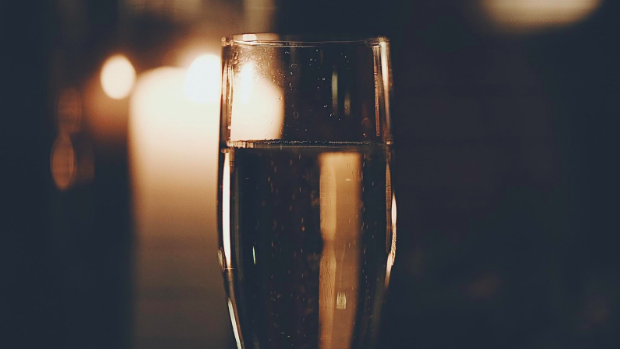Champagne is most often associated with elegance, celebration, happiness and extravagance. With the New Year being reigned in all over the world, many wine aficionados choose this sparkling wine for marking the beginning of a brand new year.
Yet, the history behind Champagne shows that this sparkling wine is more than just the celebrations it is associated with. Below, we discuss its origins and the best food pairing options to choose when serving.
The History Of This Sparkling Wine
Many people often categorize all sparkling wine as Champagne. However, only true Champagne comes from the French region after which it is named.
Located in northern France, this small region is centred on the cities of Reims and Epernay. Offering a cooler climate than other wine-growing regions in France, this area has long suffered for lacking adequate temperatures needed to ripen grapes for standard winemaking.
Despite this challenge, the region became famous for its production of sparkling wine. This was accidental, though, as they had problems with secondary fermentations that were happening in the bottle. This process releases carbon dioxide gas and can cause the bottle to explode, under the wrong conditions.
However, the Champagnoise were able to control the process with an understanding of the process of fermentation as well as stronger bottles to withstand the increased pressure. This marked the birth of this region’s renowned sparkling wine.
How Is This Sparkling Wine Made?
The production of this sparkling wine is carried out using the “traditional method”. This begins with a base wine that is fermented normally. A mixture of sugar and yeast is added to encourage a secondary fermentation in the bottle. This secondary fermentation converts the added sugar into alcohol, and carbon dioxide is generated and retained under pressure.
After the second fermentation, the yeast is left in the bottle for at least one year and often much longer. During this time the yeast begins to break down, a process known as autolysis, and impart yeasty flavours and aromas of bread and dough. With time it can also develop even more complex notes of pie crust, brioche and buttered toast. These characteristics are key to understanding Champagne.
Winemakers in Champagne are masters at blending. Wines can be a blend of Pinot Noir, Chardonnay and Pinot Meunier, and up to four other less common varieties. These will usually be selected depending on the style a winemaker wants to achieve, with Chardonnay typically adding acidity and structure, Pinot Noir adding aromas and body, and Pinot Meunier contributing fruitiness.
A “non-vintage” Champagne will usually have wines from several different vintages, so-called “reserve wines”, added to maintain a particular style.
Food Pairing Tips For Champagne
Now that you know the origins of this classic celebratory wine, the next step is to familiarize yourself with recommended food pairing options and considerations to keep in mind when doing so.
A number of wine pairing basics should be kept in mind when pairing food with this sparkling wine. For example, consider the weighting of the blend. Is the Champagne more Chardonnay or Pinot Noir? The sweetness and age profile should also be taken into consideration. The many styles and varieties that this wine offers make it the perfect pairing option for many dining occasions.
Pairing The Classic Brut Style
If popping the cork of a classic Brut, there are a number of delicious and often surprising food pairing options that will delight your guests.
For example, combining with white truffles or citrus offers an extra element of luxury. The acidity of the wine blends perfectly with these dishes. Steak is also a great choice. The texture of the bubbles helps to perfectly cut through the richness of the steak and offers a refreshing alternative to the classic pairing choice of red wines.
Pairing The Blanc De Blanc Style
When it comes to this style which is driven purely by white grape varieties, seafood is best. Think oysters, light fish and most famously, caviar.
The fresh acidity and dryness of this Champagne style make it ideal for complimenting the saltiness and oiliness of many luxurious seafood options, especially caviar. In the case of oysters, its contrasting textures of silkiness and fizz provide a beautiful treat on the taste buds.
Another great pairing for the bright flavours of a Blanc de Blanc is a light flaky fish such as Snapper or Dover sole. When baked or poached, this pairing offers a lifting effect and highlights the subtle flavours of the fish.
Pairing The Demi-Sec Style
The rarely-seen Demi-sec is a slightly sweet style that is the perfect pairing for many desserts and cheeses.
Fresh fruit-based desserts (especially yellow, white and red fruit), chocolate pudding and creme brulee are clear winners in this regard, in our opinion. In the same vein as when pairing with fish, choosing a saltier cheese option such as blue cheese acts as a perfect complement to the sweetness of this sparkling wine.
Best Champagnes To Celebrate With
Whether in celebration of a new year, a birthday or just a reunion with family and friends, the classic Champagne will always leave a lasting impression. In our opinion, there are a number of Champagne varieties and sparkling wine alternatives that you should keep on your radar including:
- Pierre Gobillard Champagne Brut Authentique
- Moet Chandon Grand Vintage 2012
- Champagne Laurent Perrier Blanc de Blancs Brut Nature
Our experts at Small Winemakers Collection are always on hand to provide advice on which wine would be best for your upcoming celebratory event.

